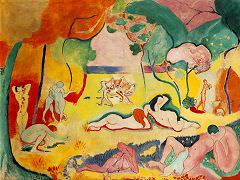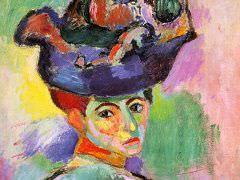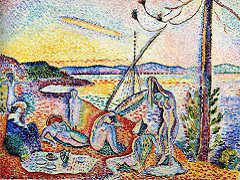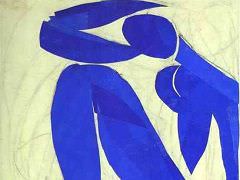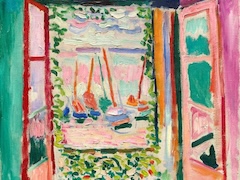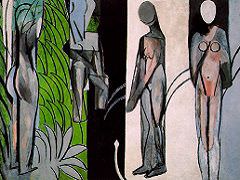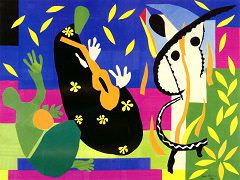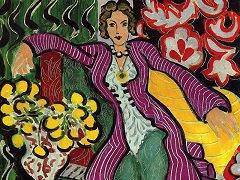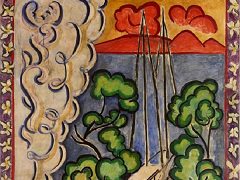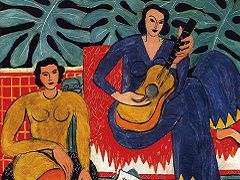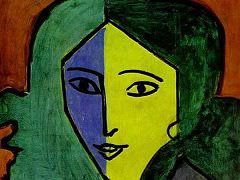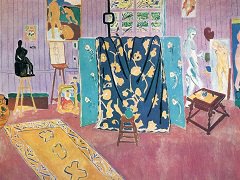Male Model, 1900 by Henri Matisse
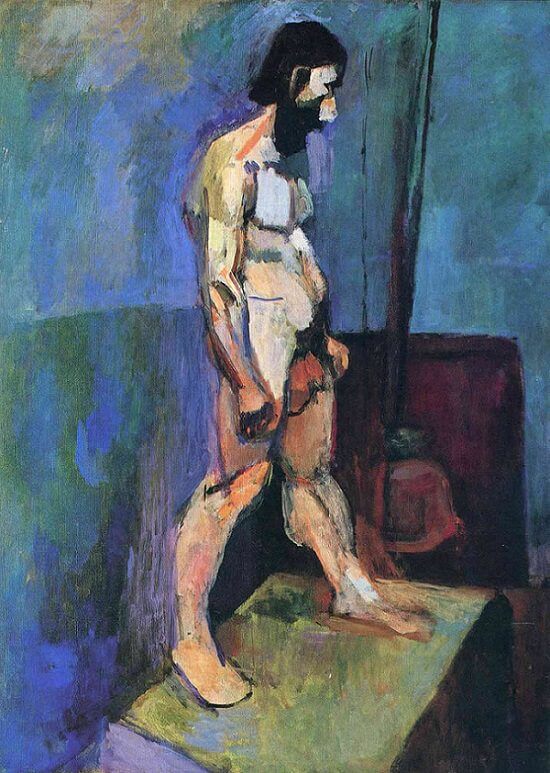
Considering Matisse's subsequent fame as a figure painter, it is remarkable that through the first decade of his career major nude academies, whether male or female, are few in number in his work. It was not until 1900 that he undertook major figure studies, but then they quickly came to predominate. The especially monumental Male Model, or Serf, is one of the finest of the early works and is intimately related to his early explorations in sculpture, the bronze Slave being a companion work in that genre.
There is a certain temptation to label this Matisse's "blue" period, thinking of a superficially similar phase that was shortly to overtake Pablo Picasso. However, the two artists' intentions are so radically opposed (nor had they met at the time) that it is misleading to use this label for Matisse's work, except in a very restricted way.
The painted version of the serf seems literally sculpted on the canvas, and the same is almost as true of the heavy swatches of blue, green, and ocher that form a far from neutral background. The planes of the body are brutal in their generality, as is the abruptness of their intersections in space. A remarkably intense contrast is formed between the high-hued yet somber interior and the highlights bathing most of the model's body.
In this early work such violent coloristic juxtaposition is moderated by the artist's intense concern for an illusion of bodily mass, with its receding and advancing planes of space. It is interesting to reflect that in works like this of about 1900, Matisse seems closer to a kind of Proto-Cubism than Picasso, whose works, of the Blue Period were to stress expressive and pathetic arabesques rather than structural masses. Ironically, the two artists were to move in mutually contradictory directions in the evolution of their early careers: Picasso toward an increasingly ponderous figure style leading ultimately to the Les Demoiselles d'Avignon (1907) and Matisse toward an increasing reduction of the inner modeling of the figure, with a greater reliance on the shaping power of decorative arabesques and ringing dolor contrasts.

